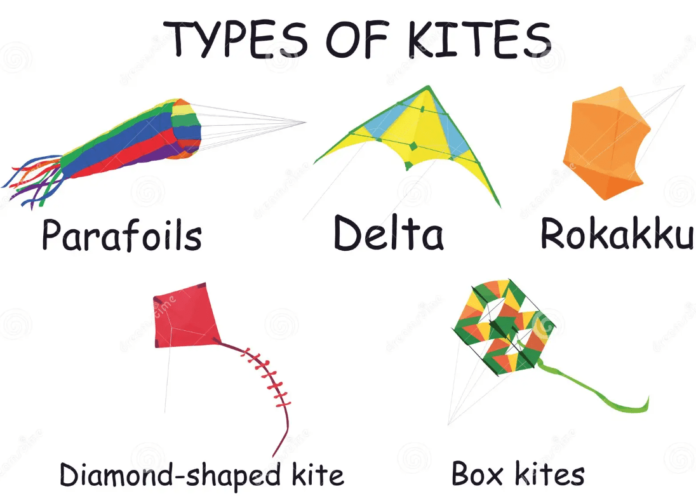A classic outdoor pastime, kite flying combines engineering, artistic expression, and a sense of freedom as vibrant kites soar across the sky. Shaped kites are a notable variety of kites because of their distinctive designs that resemble various objects, animals, or even fictional characters. The intriguing world of shaped kites is explored in this article, along with their types, history, and the joy they bring to lovers of all ages.
Table of Contents
Describe Shaped Kites
Because of their three-dimensional designs, shaped kites can be distinguished from conventional flat kites. These kites frequently mimic mythical animals, vehicles like rockets and airplanes, or other objects. Any kite with a form other than a basic diamond or rectangular design is referred to as “shaped kite” in general. Their distinctive forms produce intriguing aerodynamic qualities that can improve flying performance in addition to being aesthetically pleasing.
The Shaped Kite’s Past
The first kites were fashioned of silk and bamboo in ancient China, according to kite history. Although the original kites were mostly used for military or signaling purposes, whimsical shapes were eventually included into kite designs. Shaped kites became more and more popular in the 20th century as artists and enthusiasts started experimenting with kite design. In addition to being flown for fun, kites are now recognized in kite festivals all over the world, exhibiting the ingenuity and skill that go into making them.
Shaped Kite Types
Shaped kites come in a variety of varieties, each having special attributes and flying qualities of their own:
- Kites with animals: Popular designs for kites include those shaped like animals. Anything from fish and dinosaurs to birds and butterflies can be portrayed by these kites. They frequently have vivid colors and minute details that perfectly reflect the spirit of the animal they portray. Families and kids love flying animal kites because they add a fun aspect to the sport.
- Persona Kites: Character kits are made to look like well-known characters from fairy tales, films, or cartoons. These kites can be superheroes, legendary animals, or well-loved animation characters. Character kites are popular at kite festivals and neighborhood get-togethers because they draw in younger fliers and enthusiasts.
- Kite Objects: Object kites imitate commonplace objects or vehicles, including teapots, rockets, and airplanes. These kites provide a fun variation on traditional flying and might have a fanciful or realistic appearance. They frequently have extra features like wheels or propellers, which improves their visual attractiveness.
- Creative Kites: The main focus of artistic kite design is aesthetics rather than performance. They frequently have intricate designs, patterns, and creative expressions. These kites can mix different shapes or take on abstract forms to produce amazing visual marvels in the sky. Festivals are usually the venues when artistic kites are displayed and praised as works of art.
The Craft of Forming Kit
A combination of technical know-how and creativity is needed to create shaped kites. This is a basic rundown of the steps involved in manufacturing a kite:
- Creation: The kite’s design is the initial phase. This entails designing for structural integrity, drafting the intended shape, and taking into account how it will appear in flight. The kite’s frame, material, and any decorations should all be considered in the design.
- Contents: Selecting the appropriate materials is essential to the kite’s functionality. Common materials include frames made of carbon fiber, fiberglass, or bamboo, and sails made of lightweight materials like polyester or ripstop nylon. The longevity and flying capabilities of the kite will depend on the materials selected.
- Construction: Following the selection of the design and materials, the building process starts. Usually, this include cutting the fabric, putting the frame together, and firmly fastening the sail to the frame. To make sure the kite is both aesthetically beautiful and aerodynamically sound, attention to detail is crucial.
- Evaluation and Modifications: After construction, the kite should be tested to assess its flying potential. To enhance overall performance, stability, or balance, adjustments could be required. This testing process is crucial, since it allows the maker to tweak their creation before sharing it with others.
The Pleasure of Shaped Kite Flying
It’s a fun experience for both individuals and family to fly shaped kites. Beyond just being able to see something soar in the air, kite flying provides chances for exercise, ingenuity, and leisure. As kite flyers take in the power of the wind and the beauty of the sky, they develop a closer bond with nature. In addition, taking part in kite festivals and get-togethers can foster a feeling of community by uniting individuals of all ages around the love of flying.
Conclusion
A special fusion of art, engineering, and recreation may be seen in shaped kites. Both novices and kite fans will find them intriguing due to their engaging designs and variety of varieties. There’s something intriguing about watching a skillfully constructed shaped kite soar in the sky, regardless of whether you’re inclined to animal kites, character kits, or creative creations. Accept the excitement of kite flying and think about making or gathering your own formed kites to feel the rush they provide directly.




